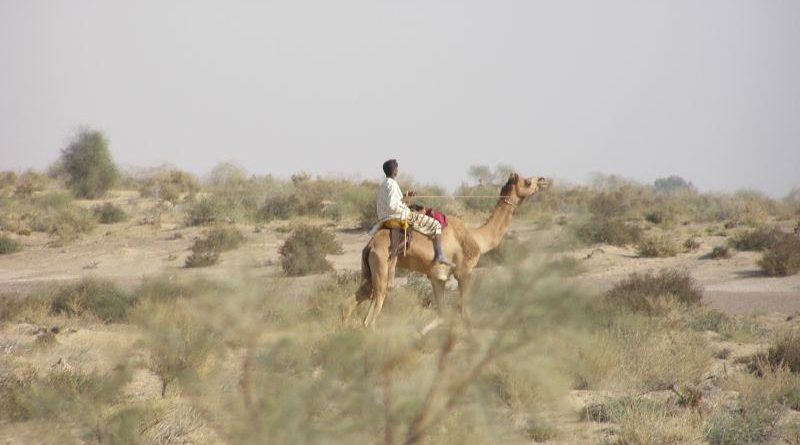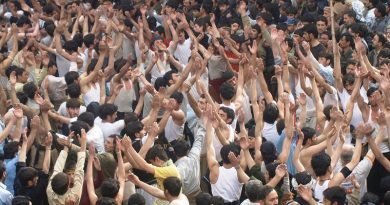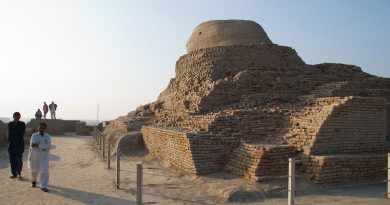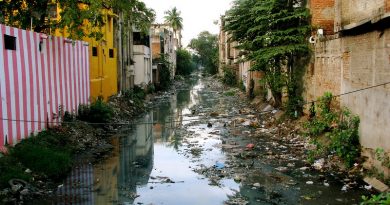Trekking the Cholistan Desert
Trek Essentials
Where: Cholistan Desert, Punjab, Central Pakistan
Best Season: October – March
Best Sights: The grand sandstone Derawar Fort
Remember to Bring: Food, lots of water, a guide and turban to avoid the searing heat
The Cholistan, or Rohi, Desert in Punjab is the largest desert on the Indian continent. The desert is over 10,000 square miles. Located 20 miles from Bahawalpur, The Hakra River dried up here, and with it most life. The 2.5 million people who live here are nomads who lead a simple life herding and trading in camels. Their culture is strong with many romantic legends dating back to ancient times and they place great value in the power of song. The desert festivals are simply out of this world, you may see camels dancing (except those with two left humps) who are even better dressed in dazzling costumes than their owners. The people of Cholistan wear embroidered and print coloured shirts, skirts and robe coats. During the wet season, the nomads built shallow reservoirs to catch rainwater to survive long spells away from their villages.
Things to See and Do
There are a number of forts along the old river bed dating back to 4000 BC. The Forts were built to guard the ancient trading routes.
Derawar Fort – Deep in the heart of the Cholistan Desert stands the lonely but awe-inspiring Derawar Fort. A massive fort with decoratively carved sandstone walls, which take your breath away, as they rise magnificently from the flat desert wasteland like something so grand it’s difficult to imagine. Built in 1733 by the Nawab (Royal family) of Bahawalpur, the fort can be seen for many miles with walls 90 ft high. It is extremely photogenic, but is best seen in the morning or evening before or after the desert’s midday sun takes hold.
Shrines of Channan Pir – 30 miles from Derawar Fort. A festival is held annually at the start of March where devotees gather on the night of the full moon to honour the tomb of saint Channan Pir.
Shopping – You can buy locally produced Cholistan crafts at the Craft Development Centreoutside Farid Gate. Best buys including a Flassi (camel hair wall hanging or decorative carpet), aGindi (cloth needlework covering used as spread or tablecloth), Khalti (multi-coloured embroidered purse)or a Changary (geometric plague made of palm leaves).
Trekker’s Essentials:
Clothes – Make a turban from a piece of cloth. Essential to cope with the searing heat of the desert. Place onions in the turban which apparently absorbs the heat to keep your head fresh – if you can cope with smelling more pungent than your camel.
– Bring plenty of food and water. Oasis’s are rare in this desert.
– For the more adventurous is it possible to pay for a permit at the Bahawalpur office of the PTDC (Pakistan Tourism Development Corporation) and stay independently in the desert, but the logistics involved in bringing in your water and food supply and arranging for a pickup back out, make this option not particularly viable.
– Get yourself a recommended guide who is a local to the region and can protect you against possible bandits.
– Best time to visit is winter – October to March when the temperature ranges from 8C – 23C.
– Four wheel drive and camel tours can be arranged to take you into the Cholistan and to the fort, but for a quick day visit it’s best to hire a car and driver for the ‘relaxed’ experience. Prices are extremely cheap, but make sure you choose your car and driver wisely.
More Information
PTDC Tourist Information Centre
PTDC Motel
Club Road
Bahawalpur
Pakistan
Tel: 0621 82835
By Susi O’Neill




